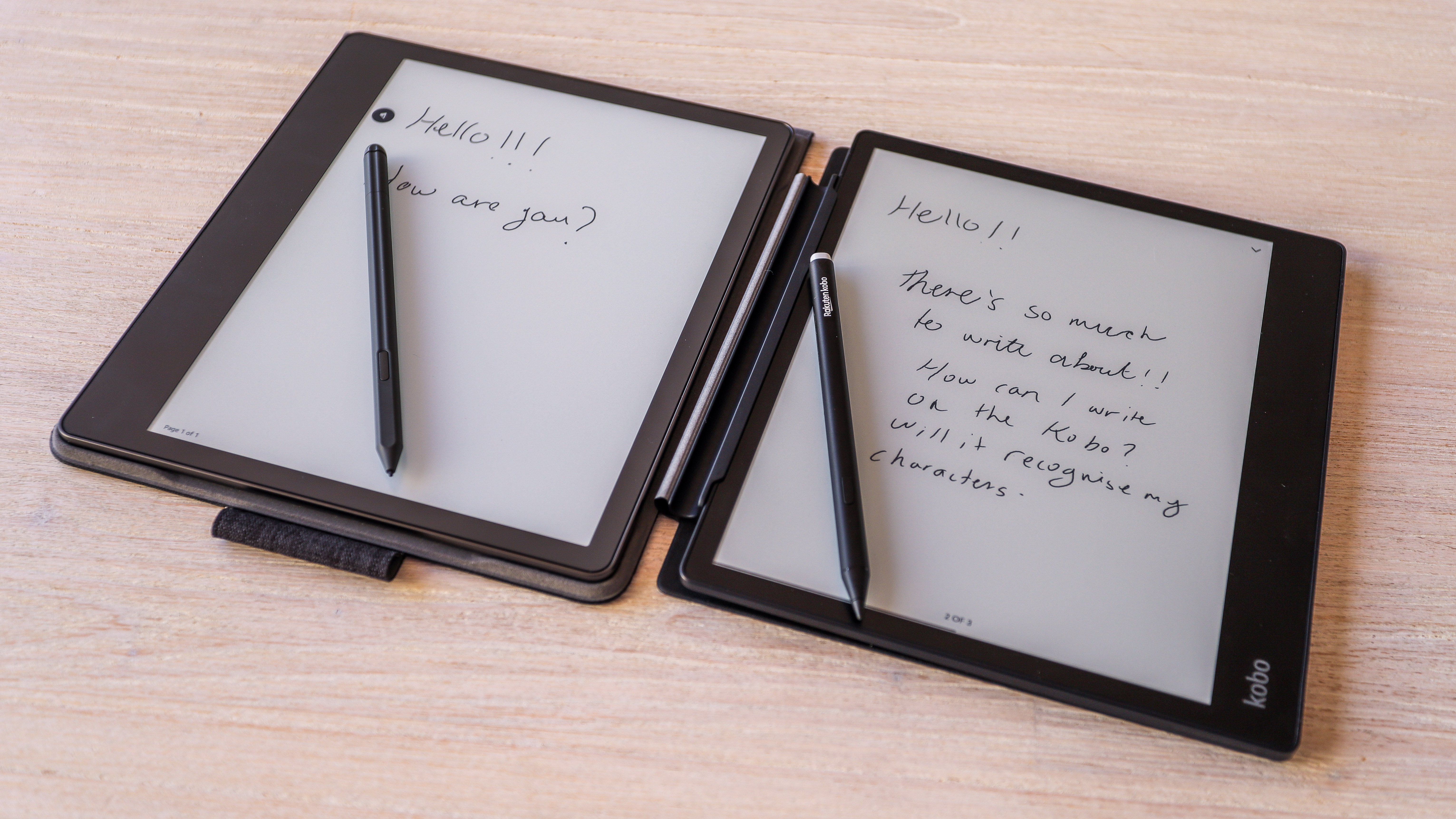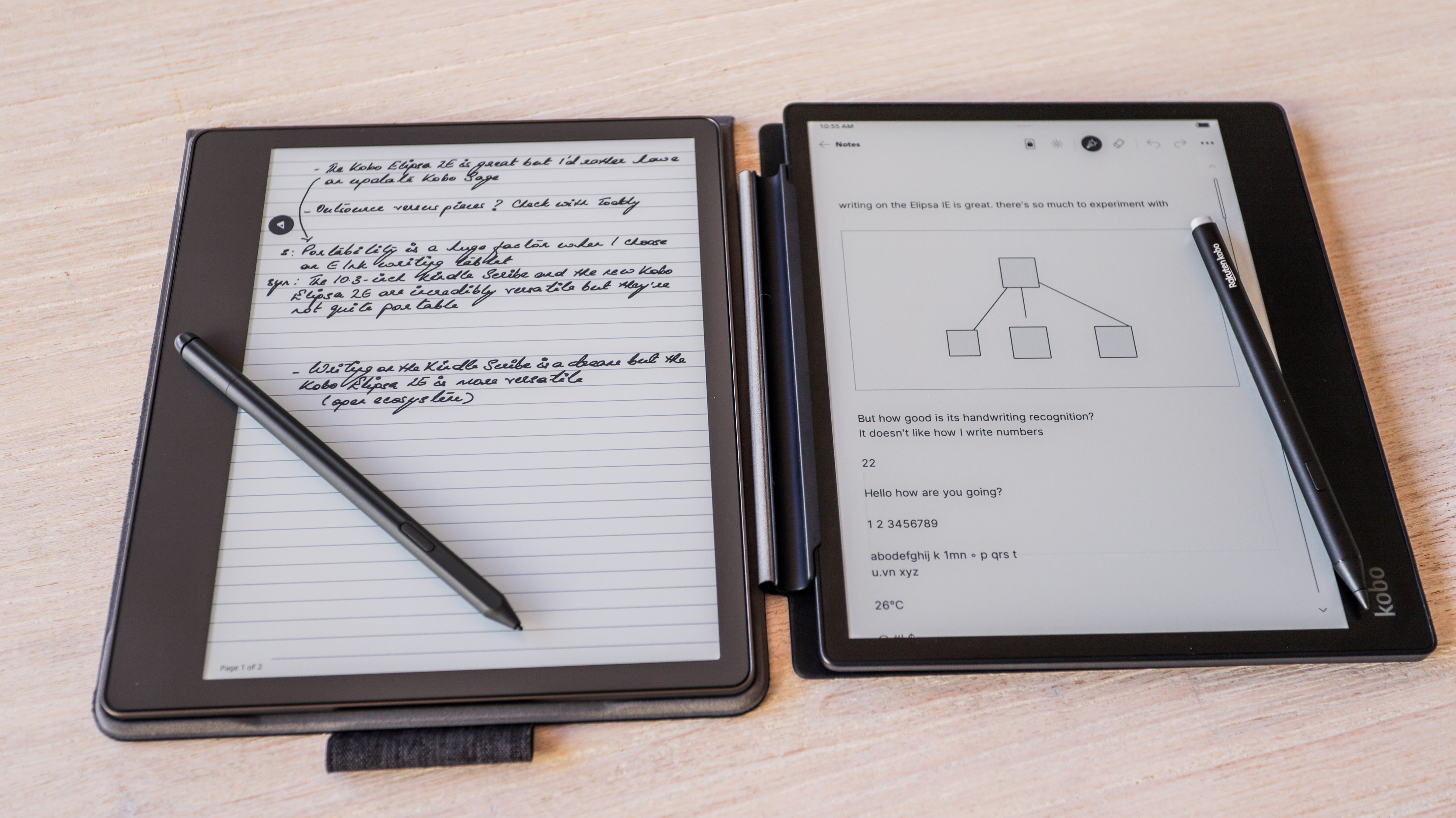
I make notes at work, a lot of them – some are just temporary scribbles, others have more long-term value. So I’ve always had a notebook with me, which would get replaced with more paper once it was full.
It was the Onyx Boox Note Air2 Plus that made me go completely paperless. I had tried other 10.3-inch E Ink writing tablets before, including the Kobo Elipsa from 2021, but hadn’t quite found a complete package that felt ‘right’. Even the Note Air2 Plus isn’t quite perfect, with a slightly convoluted interface based on Android 11.
So when Amazon released the Kindle Scribe, I was thrilled that I could potentially have the one device that was easy to navigate and give me access to all my notes and books… especially since, in the lead up to said launch, Amazon announced that EPUB support would finally be rolled out to its Kindles by the end of 2022.
While EPUB support didn’t come until early this year, the writing tools on the Kindle at launch were extremely disappointing. A single pen type, a handful of page templates and all annotations on a book were essentially sticky notes. Since then the number of pen/brush options have increased but that’s about it. There’s no handwriting recognition and your annotations in margins of books are still like sticky notes.
This is why I think the Kobo Elipsa 2E might be a better choice for anyone looking for an E Ink writing tablet. Admittedly you’re going to need to buy the sleepcover separately if you want to keep the new Kobo Stylus 2 safe, but the versatility the tablet offers as an ereader and a digital notetaker makes it worthwhile.
Why Kobo’s feature set really matters
An E Ink writing tablet is worth it only if you’re planning to make good use of the features on board, especially since these larger ereaders cost a pretty penny. And that’s where the Kobo Elipsa 2E comes in. Admittedly the writing features are identical to the older Elipsa, but the newer model is faster and more responsive than its predecessor.
So what does it have that the Kindle Scribe doesn’t? To start, there’s 20 page templates to choose from in the Basic Notebooks on the Kobo versus 18 on the Kindle. There are then five pen types, each available in five sizes (or writing thickness) and in five shades of black and gray on the Elipsa. In comparison, the Kindle Scribe only has four pen types in five sizes just in black.
Kobo then takes it a step further by offering something called Advanced Notebooks. This is really where the two Kobo Elipsas – and even the Kobo Sage if you prefer a more portable note-taking ereader – shine. These notebooks open as a ruled page by default but there’s a whole load of customization options here.

You can start writing, then add a drawing or diagram under that. Diagrams like flowcharts, if hand-drawn, will automatically convert to a digitized version. There’s the ability to insert mathematical equations if you’re trying to solve something. You can then convert everything handwritten to text and, I have to admit, I am very impressed with Kobo’s handwriting recognition engine. In fact, the engine is smart enough to actually solve some of those mathematical problems for you. I’m not a math genius, so I haven’t tried anything more complicated than Pythagoras’ theorem and the Elipsa 2E solved it for me, even letting me know that the decimal section was approximate.
While the Kindle lets you export your notes by emailing them to the address you use as your linked Amazon account, Kobo notes and annotations can directly be exported to a Dropbox account if you have one from the device itself. Of course, the old-fashioned way of plugging your device into a computer also works for both, but cloud transfer is so easy!
One other thing I love about Kobo’s Advanced Notebooks – I even get control over the line spacing I want, with three choices of Narrow, Default and Wide. The Elipsa 2E will event prompt you to write smaller so you can keep your handwriting between the lines. Nothing like that on the Kindle Scribe that I can find.
The flip side to all this is I love writing on the Scribe. It’s smooth as silk on the screen, while the Kobo Elipsa 2E offers more friction and writing on it feels like a pencil moving over paper. And the metal finish of the Scribe looks so much more premium compared to the Kobo's plastic body – the Kindle just oozes oomph.
But I think I’d take that little extra friction and a dated design only because I get so much more versatility out of Kobo’s Notebooks. That, for me, is better value for a large-screen note-taking ereader that can prove really useful to researchers, students and academics.
Or, as a colleague who heard me talk about the Elipsa 2E called it, “An unassuming ereader on the outside but filled with a wealth of other features.”
- Don't need a large-screen E Ink tablet? Take a look at what the best ereaders choices are instead




!["[T]he First and Fifth Amendments Require ICE to Provide Information About the Whereabouts of a Detained Person"](https://images.inkl.com/s3/publisher/cover/212/reason-cover.png?w=600)


